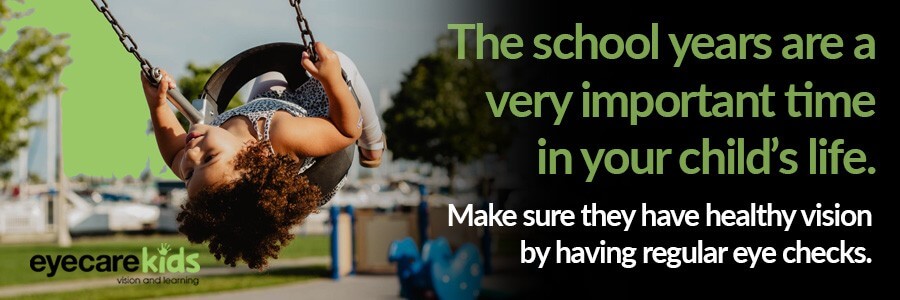Most kids don’t realise if they have a vision problem. This is why many childhood vision problems remain undiagnosed until the child gets a comprehensive eye test.
By then, these visual problems may have already caused serious setbacks affecting how a child learns information in school—especially because 80% of what a child learns, they learn through vision.
Don’t miss these 17 warning signs that tell you your child may have a vision problem:
- 1. Sitting too close to the TV. Myopia or short-sightedness could be the reason why your child prefers to sit close to the TV.
- 2. Experiencing frequent headaches. Attempting to compensate for blurry vision could lead to your child experiencing frontal headaches.
- 3. Light sensitivity. Light sensitivity is a sign of exotropia, which is a type of strabismus or eye misalignment where one or both eyes deviate outwards.
- 4. Squinting. Squinting can be a sign that your child is compensating for poor vision as narrowing the eyes makes vision a little clearer.
- 5. Tilting the head when reading. When your child tilts their head when reading, this can be a sign of strabismus (or eye turn).
- 6. Losing their place when reading. Losing place while reading and skipped lines can indicate that your child may have a tracking problem or astigmatism.

- 7. Writing vertically. When your child prefers to write vertically (up and down) rather than horizontally (left to right across the page), this is also another warning sign.
- 8. Covering or shutting one eye. Closing one eye or covering it may be indicative of a vision problem in one or both eyes.
- 9. Frequent eye rubbing. Rubbing the eyes could mean itchy eyes from allergies or other causes, but frequent eye rubbing could be a sign of tired eyes or eye fatigue. Easily tired eyes could indicate that your child has a vision problem.
- 10. Eye turns / “lazy eye”. Eyes need to work together as a team to sent the correct signals to the brain so that your child sees a single image while sustaining clear, comfortable vision. If their eyes turn in different directions or seem to wander, this could mean strabismus (eye turn) and/or amblyopia (lazy eye).
- 11. Short attention span. If you find that your child is easily distracted in the classroom or has a difficult time paying attention, it could be a sign that they are getting restless because of difficulty seeing their work.
- 12. Dislikes reading. Does your child love it when you read stories to them but dislikes to read or avoids it? This could indicate a vision disorder that caused reading to be very difficult for them.
- 13. Avoiding schoolwork. Avoiding schoolwork is also a sign that your child’s eyes are easily strained when they focus on near tasks.
- 14. Poor comprehension. If your child can understand a story when being read to, but has poor comprehension and memory when they were the ones doing the reading, this could indicate a visual memory problem.
- 15. Committing mistakes when copying notes. When your child seems to make several errors copying from one page to another or from the blackboard to their notes, this is also a warning sign there might be a vision problem.
- 16. Frequently missing small words. Skipping smaller words when reading aloud (example, is, at, or, the etc.) is indicative of an eye tracking problem.
- 17. Poor performance in school. When you feel like your child could do better in school yet they seem to fall behind despite their best efforts, this could mean there’s an underlying vision problem that prevented your child from achieving their best.
If your child has one or more of these warning signs, please have them see one of our optometrists for a comprehensive eye test. Our test will not only check for visual acuity (20/20 vision) but will also evaluate your child’s overall eye health and will check for visual disorders which may not be detected during their school vision screen.

